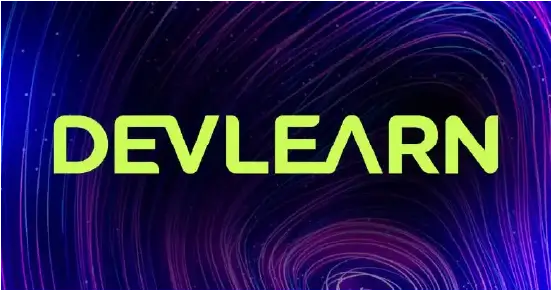Online training is often the product of a conversation between a manager or executive and an L&D professional that starts, “We need training on …”
It’s time for L&D to take the initiative in driving proactive training development. Rather than wait for a problem to surface and then throw some training at it in an attempt to solve the problem—which might not even be solvable with training—L&D can anticipate needs and fill them before they create problems.
This is a roundabout way of suggesting that L&D leaders embrace the trendy enthusiasm for upskilling and reskilling while taking the lead in figuring out which skills their organization will need in six months, a year, or five years.
Focus on upskilling and reskilling
L&D departments worldwide are focusing on upskilling and reskilling initiatives within their organizations, according to the LinkedIn Learning 2021 Workplace Learning Report. This drive accelerated when COVID-19 shutdowns forced thousands of workers to quickly pivot to remote work—but the need extends far beyond brushing up on virtual training and collaboration skills.
Reskilling and upskilling are inherently proactive, as they prepare learners to take on new roles or apply new skills in their existing roles:
- Reskilling a worker teaches them new skills that may prepare them to take on new responsibilities or move up or laterally into a different role.
- Upskilling a worker enables them to adjust to changes in their job role, as new technologies are used, automation changes their job, or processes shift for other reasons.
An organization with a strong learning culture that supports proactive training is one that is future-proofing its workforce and preparing the flexibility to adapt to future changes, whether related to a pandemic—or stemming from demographic changes, automation and emerging technology, regulatory changes, or changing employee expectations.
Ongoing upskilling and reskilling programs enable organizations to invest in the future of their workers, in addition to anticipating and preventing knowledge gaps. This training can develop soft skills and prepare high performers to take on leadership roles as their careers evolve. In fact, leadership and management training closely followed upskilling and reskilling as an area of focus for L&D leaders in the LinkedIn report.
Upskilling and reskilling support internal job mobility
The 2019 Deloitte Human Capital Trends report highlighted the need for organizations to look inward to fill open jobs and fuel growth. The 2021 Deloitte report goes even farther, pointing to ways that the COVID-19 crisis showcased workers’ ability and willingness to apply their creativity and potential to helping their organizations not just weather the crisis but thrive.
The COVID-driven need to hire and promote from within dovetails with workers’ eagerness to explore non-linear career paths and new challenges. This focus on reskilling and upskilling existing employees empowers both organizations and their workers to develop “the latent potential within the workforce—and the value they can create when their potential is understood and harnessed,” according to the 2021 Deloitte report.
Upskilling and reskilling employees shows them a career path within the organization and sends the message that the company believes in them and their future potential. Organizations with greater internal mobility and robust opportunities for learning experience significantly lower employee turnover and double the longevity among employees, which benefits organizations in myriad ways. Investing in upskilling and reskilling workers is a way to retain and motivate those employees as well as prepare for the organization’s innovative future.
Anticipating skills gaps
Determining which skills will be needed by an organization and how best to proactively meet that need will depend on the organization. But two broad areas of focus crop up again and again in workplace learning research: Preparing for automation and the threat of a leadership gap as current leaders retire. These may offer guidance to learning leaders looking to launch an upskilling or reskilling initiative.
Train to prepare for automation
The Future of Jobs 2020 report, released in October by the World Economic Forum, found that automation is accelerating partly as a result of changes forced by COVID-19. By 2025, the Forum expects “a new division of labor between humans and machines will disrupt 85 million jobs globally.” The disruption will affect large and small businesses across 15 industries, the report forecasts. While it’s expected that 85 million jobs will be displaced by automation, 97 million new roles are expected to emerge.
Upskilling and reskilling efforts might benefit from studying on how automation is already affecting an organization or industry. But the skills needed to prepare organizations and workforces for the impacts of automation are broad and not necessarily industry-specific; in fact, the upskilling needed to adjust to technology and automation reprises skills that proved useful during the pandemic: critical thinking, problem-solving, active learning, stress tolerance, flexibility.
Proactively head off a looming leadership gap
According to Pew Research Center, the COVID-19 crisis accelerated another trend: the retirement of Baby Boomers. These experienced employees, now mostly in their 60s and 70s, may leave an experience and leadership gap that younger generations are eager to fill.
Learning leaders, working with company leadership, can identify potential future leaders and ensure they get necessary reskilling training—along with leadership-development coaching and mentoring.
Skills to build include strategic planning, ideally with opportunities for potential leaders to participate in key projects while learning. Future leaders also need opportunities to learn and practice people management skills.
The need for hands-on practice to support leadership skills training underscores why transition coaching ideally involves not only the up-and-coming leaders but also veteran leaders, as well as other stakeholders. L&D leaders cannot shoulder this responsibility alone but can play a critical role in getting the process started and ensuring that appropriate and effective training materials are available.
Take your own medicine
Proactive upskilling and reskilling benefits the L&D team, as well as the rest of your organization’s learners. When considering skills needed to remain effective into the future, L&D leaders should not neglect themselves or their teams. If you seek the strategies and skills required to navigate the needs of today’s ever-changing workplace or wish to connect with a community of learning leaders, look no farther.
The Learning Leaders Alliance is a vendor-neutral global community for learning leaders who want to stay ahead of the curve, and for aspiring leaders wanting to build their skillsets. The Learning Guild’s Alliance Membership package includes access to exclusive digital events and content curated for today’s modern learning leader, as well as opportunities to attend in-person learning leadership events held around the globe. See the details here.










